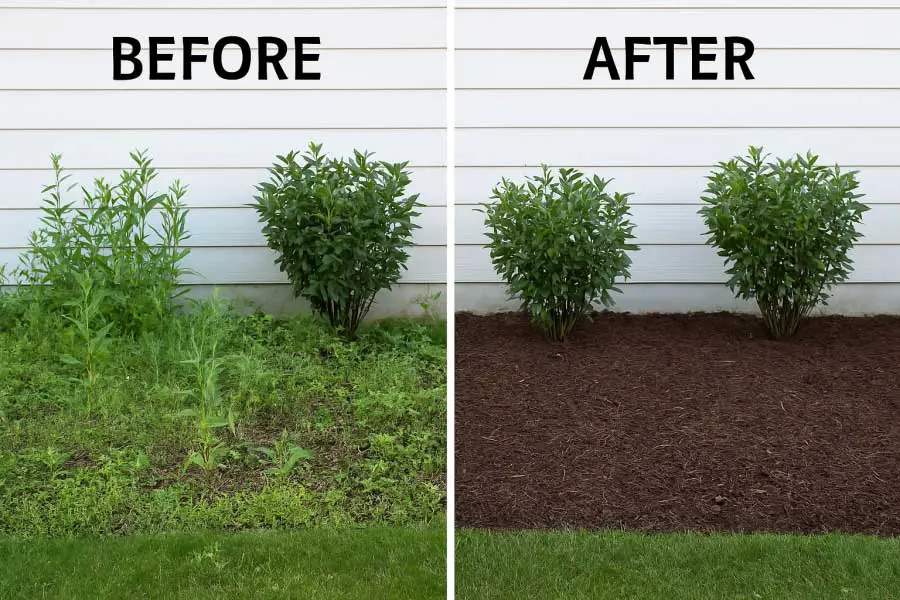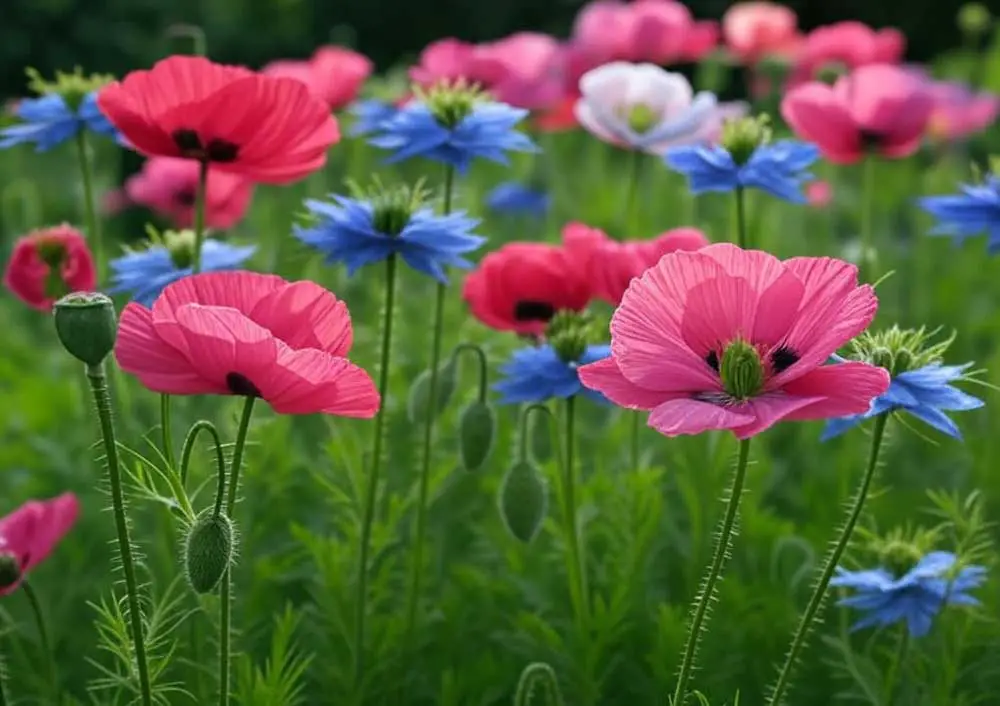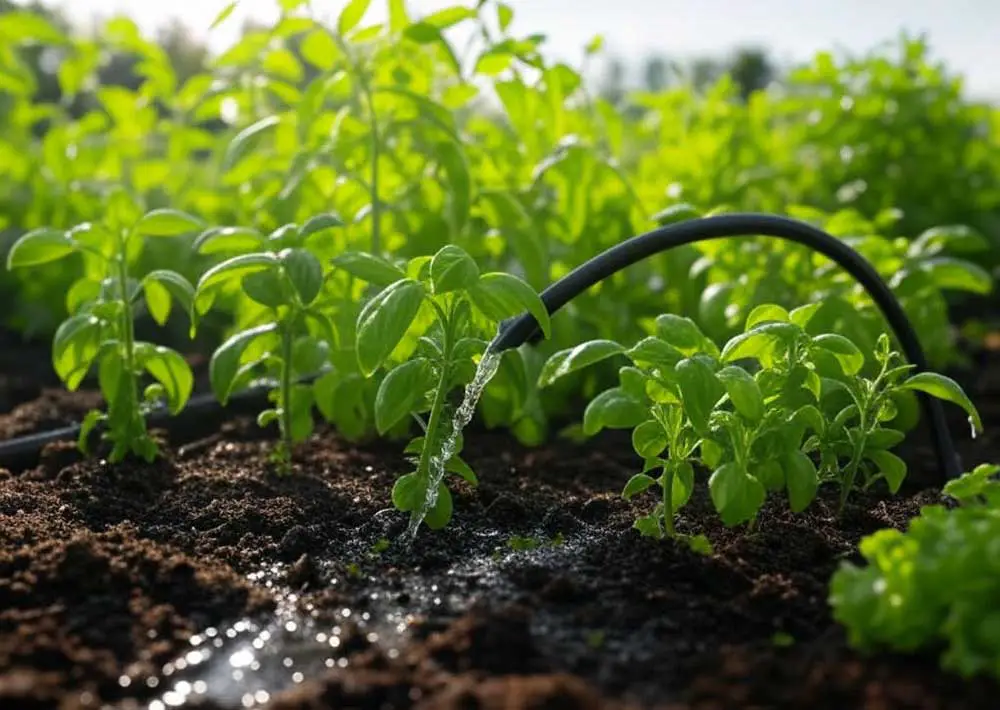Imagine that you have a tangle of fragrant roses tumbling over a weathered fence, bees humming lazily among purple lavender spikes, and a riot of colorful blooms that somehow look perfectly imperfect. This is the magic of a cottage garden—romantic, wild, and bursting with life. But here’s the truth no one tells you upfront: traditional cottage gardens can be a ton of work. Endless weeding, constant pruning, and needy plants that demand attention like spoiled houseguests.
What if I told you there’s a way to have that same enchanting, storybook charm—without spending every weekend toiling in the dirt?
Welcome to the lazy gardener’s guide to a low-maintenance cottage garden. This isn’t about sacrificing beauty for practicality; it’s about working smarter, not harder. Imagine a garden where plants practically take care of themselves, where weeds are smothered before they sprout, and where watering is as simple as turning on a timer. Sounds like a fantasy? It’s not.
In this post, you’ll discover:
- The toughest, prettiest plants that thrive on neglect (no divas allowed!).
- Mulch tricks that slash weeding time by 80% (goodbye, back pain!).
- Self-seeding flowers that replant themselves year after year (free plants—yes, please!).
- Design hacks to keep your garden lush with minimal effort (because you have better things to do).
Whether you’re a busy parent, a working professional, or just someone who loves pretty gardens without the hassle, these tips will help you create a self-sustaining slice of paradise. So grab a cup of tea (or wine—no judgment here), and let’s dig in!
Your dream garden is closer than you think—and it’s easier than you ever imagined.
1. Choose the Right Plants: Hardy Perennials That Thrive with Neglect
Gardening can feel like a full-time job—unless you pick plants that practically take care of themselves. Meet the superheroes of the plant world: hardy perennials that laugh in the face of neglect and still reward you with stunning blooms and rugged charm. Let’s dive into three top picks that’ll make your garden the envy of the neighborhood, no green thumb required.
Lavender
This isn’t just a plant—it’s a vibe. With its silvery foliage and purple spikes, lavender fills the air with a soothing scent that’s basically a spa day for your senses. Drought-resistant and tough as nails, it shrugs off dry spells like a champ. Bonus: pests like deer and mosquitoes hate it, so your garden stays a peaceful oasis.
Coneflowers (Echinacea)
These daisy-like beauties are the marathon runners of flowers, blooming from summer to fall without breaking a sweat. Their vibrant pinks, purples, and whites draw bees and butterflies like a pollinator party, while their sturdy stems scoff at wind and neglect. They’re practically begging you to forget about them.
Sedum (Stonecrop)
If you’ve got rocky, poor soil that other plants snub, sedum’s your guy. This succulent thrives where others wither, offering fleshy leaves and star-shaped flowers with zero fuss. It’s the ultimate “set it and forget it” plant.
Why do these work? They’re built to bounce back—drought, forgetful watering, or a busy schedule won’t faze them. Skip the divas like hybrid tea roses or needy annuals. With these tough perennials, your garden will flourish, and you’ll look like a pro—without the effort!
2. Mulch Magic: How to Reduce Weeding and Watering Effortlessly
Imagine a garden where weeds cower, watering cans gather dust, and your plants thrive with minimal effort. Sound like a dream? It’s not—it’s the magic of mulch! This unsung hero of gardening can transform your plot into a low-maintenance paradise. Let’s dig into the best mulch types and how to wield their powers like a pro.
First, shredded bark. This rugged, natural beauty is the marathon runner of mulches—long-lasting and stylish, it gives your garden beds a polished, forest-floor vibe. It smothers weeds and locks in moisture, so you’re not out there yanking invaders or hauling hoses every day. Plus, it’s tough enough to stick around for seasons.
Then there’s straw, the veggie garden’s best friend. Lightweight and affordable, it blankets your soil like a cozy quilt, keeping weeds at bay and moisture in check. It breaks down fast, enriching the earth as it goes—perfect for gardeners who love a quick, productive cycle. Your tomatoes and peppers will thank you.
And don’t sleep on compost. This dark, crumbly gold does double duty: it snuffs out weeds while secretly feeding your soil with nutrients. It’s like a slow-release energy drink for your plants—low effort, high reward.
Here’s the trick: spread mulch 2–3 inches thick around your plants, but don’t let it hug their stems—give them breathing room. Beyond weed control and water savings, mulch fights soil erosion and keeps roots cool when summer blazes. With this simple hack, you’ll spend less time toiling and more time enjoying your garden’s glory!
3. Self-Seeding Flowers: Let Nature Do the Work for You
Want a garden that replants itself while you sip coffee and admire the view? Self-seeding flowers are your ticket to a low-effort, ever-blooming paradise. These clever plants drop seeds, snooze through winter, and pop back up like magic come spring. Let’s meet three stars that’ll have nature working overtime for you.
Poppies
These flamboyant divas scatter their seeds like confetti, ensuring a yearly encore of fiery reds, pinks, and oranges. Their papery petals dance in the breeze, turning your garden into a living painting. Forget replanting—just let them do their thing, and they’ll keep the show going.
Nigella (Love-in-a-Mist)
With its wispy, delicate blooms in blues and whites, Nigella looks like it floated out of a fairy tale. But the real treat? Its funky, balloon-like seed pods that dry into ornamental treasures. Leave them be, and they’ll reseed with zero fuss, adding charm year after year.
Calendula
These sunny orange and yellow blooms are more than just pretty faces—they’re edible, pest-repellent, and tough as nails. Sprinkle their petals in salads or let them guard your veggies; either way, they’ll reseed cheerfully without you lifting a finger.
Managing them is a breeze: thin seedlings in spring to avoid a crowd, or scoop them up and transplant where you’d like a splash of color. One caveat—steer clear of aggressive spreaders like mint (unless potted). With these self-sowers, you’ll have a thriving garden that feels like nature’s gift, not a chore!
4. Group Plants by Water Needs for Smarter Gardening
Tired of playing plant detective, trying to figure out who’s parched and who’s drowning? There’s a smarter way to garden: group your plants by their water needs. This zoning trick turns chaos into harmony, saves you time, and keeps your garden thriving with less guesswork. Let’s break it down and get your green space working like a well-oiled machine.
Thirsty Zone
This is where your water-guzzlers—like hydrangeas and ferns—live their best lives. These drama queens crave moisture and shade, so tuck them near downspouts, under trees, or in that damp corner where the sun doesn’t overstay its welcome. Give them a steady drink, and they’ll reward you with lush foliage and showy blooms that scream “look at me!”
Drought-Tolerant Zone
This is the rugged crew—lavender, yarrow, sedum—that laughs at dry spells. Plant them in sunny, well-drained spots where the soil doesn’t cling to water like a needy ex. These tough cookies thrive on neglect, sipping sparingly while pumping out fragrant flowers or chunky succulence. They’re the low-maintenance friends every gardener needs.
Why does this work? Zoning means no more schlepping the hose across the yard or accidentally drowning your lavender while overcompensating for a thirsty fern. It’s like organizing your closet—everything’s where it belongs, and life gets easier. Plus, your plants stay happier when they’re not fighting over the watering can. So grab your trowel, map out those zones, and watch your garden—and your free time—flourish!
5. Go for Ground Covers to Suppress Weeds Naturally
Sick of battling weeds that pop up like uninvited guests? Say hello to ground covers—nature’s weed-smashing, garden-beautifying secret weapon. These low-growing champs spread out, choke out invaders, and leave your yard looking effortlessly lush. Let’s explore three stellar options that’ll have you ditching the weed-puller for good.
Creeping Thyme
This tiny titan isn’t just a weed suppressor—it’s a sensory delight. Its fragrant leaves release a herby aroma when you brush by, and come summer, it explodes with dainty purple blooms that bees adore. Tough enough to handle light foot traffic, it’s perfect for weaving between stepping stones or blanketing sunny patches.
Ajuga (Bugleweed)
This speedy spreader is a weed’s worst nightmare, carpeting the ground with glossy leaves in deep green, bronze, or variegated hues. Spring brings spikes of purple flowers that add a pop of color, making it a stunner under shrubs or along borders. It’s like a living mulch with attitude.
Sweet Woodruff
This is the shade-lover’s dream. Thriving under trees or in dim corners, its whorled leaves and starry white flowers bring a fairy-tale vibe. Crush a leaf, and you’ll catch a whiff of vanilla—pure garden magic. It’s a weed-blocking charmer that turns tricky spots into fragrant havens.
Here’s the hack: plant these beauties between stepping stones, under shrubs, or anywhere bare soil begs for trouble. They’ll knit together, smother weeds, and cut your maintenance time in half. Ground covers don’t just work—they wow. Get planting, and let nature take the wheel!
6. Opt for Slow-Growing Shrubs to Minimize Pruning
Love the look of shrubs but dread the endless snip-snip of pruning? Slow-growing shrubs are your ticket to a gorgeous, low-maintenance garden that doesn’t demand your weekends. These laid-back beauties grow at a leisurely pace, keeping their shape without constant haircuts. Let’s meet three champs that’ll keep your shears gathering dust.
Boxwood
This classic green gem is the MVP of tidy gardens. With its dense, evergreen foliage, it holds a neat shape like it’s posing for a portrait. You’ll only need to trim it once or twice a year—maybe less if you’re feeling extra lazy. It’s perfect for borders or that polished hedge vibe without the upkeep.
Dwarf Hydrangeas
These pint-sized powerhouses deliver big, fluffy blooms without sprawling out of control. Unlike their giant cousins, they stay compact, so you can enjoy those dreamy flowers—pink, blue, or white—without wrestling them into submission. A light trim now and then keeps them happy, but they won’t punish you for skipping it.
Spirea
Tough as nails, this shrub flaunts colorful leaves and clusters of flowers in pinks or whites. It grows slowly, resists pests, and shrugs off neglect like a pro. It’s a set-it-and-forget-it stunner for any sunny spot.
Steer clear of fast-growers like forsythia or butterfly bush unless you’re itching to prune every other month. With slow-growing shrubs, you’ll spend less time taming and more time admiring. Plant smart, kick back, and let your garden shine—effortlessly!
7. Use Evergreen Structure for Year-Round Beauty Without Effort
Want a garden that dazzles 365 days a year without breaking a sweat? Evergreens are your secret weapon—delivering structure, color, and charm even when winter tries to steal the show. These steadfast plants keep your yard looking alive when everything else checks out for the season. Let’s spotlight three all-stars that’ll make your garden a year-round knockout.
Dwarf Conifers
These pint-sized pines and spruces bring texture and personality with their needle-like foliage and quirky shapes. From soft blues to deep greens, they stay vibrant through snow and frost, turning your garden into a mini winter wonderland. Low-maintenance and slow-growing, they’re perfect for small spaces or rock gardens.
Holly (Ilex)
With its glossy, spiky leaves and pops of red berries, holly is a festive showstopper that doesn’t quit. It’s not just pretty—it’s a buffet for birds, adding life to your yard when the days get short. Tough and evergreen, it’s a no-fuss pick for hedges or standalone flair.
Here’s the design trick: plant these near entryways or walkways for instant curb appeal that greets you (and your neighbors) year-round. Evergreens don’t just fill space—they create a backbone of beauty that thrives effortlessly. Skip the seasonal slump and let these green heroes shine!
8. Automate Watering with Drip Irrigation for Hassle-Free Care
Picture this: a garden that waters itself while you kick back with a cold drink, no hose-dragging or sprinkler-dancing required. Drip irrigation is the game-changer every gardener needs—smart, efficient, and so easy you’ll wonder why you didn’t try it sooner. Let’s dive into why this system is your ticket to hassle-free plant care.
First off, drip systems are water wizards. They deliver H2O right to the roots, sipping up to 50% less than those wasteful sprinklers that douse your driveway more than your daisies. That’s not just good for your plants—it’s a win for your wallet and the planet. Less runoff, more growth, and zero guilt.
Then there’s the health perk: no soggy leaves. Unlike overhead watering that leaves plants dripping and prone to fungal funk, drip irrigation keeps foliage dry and disease-free. It’s like giving your garden a VIP treatment—water where it counts, without the drama. Your roses and tomatoes will practically high-five you.
Best part? You don’t need a pro to set it up. Grab a soaker hose and a cheap timer—think under $50 at your local hardware store—and you’ve got a DIY drip system ready to roll. Snake it through your beds, set the timer, and let it work its magic while you binge your favorite show or nap in the hammock.
Drip irrigation isn’t just convenient—it’s a gardening glow-up. Automate the chore, save water, and watch your plants thrive. Who knew being lazy could look so green?
Final Thought
A cottage garden doesn’t have to mean endless work. With smart plant choices, mulch, and a little automation, you can enjoy a charming, wild-but-tamed space with minimal effort.
FAQs About Low-Maintenance Cottage Gardens
Q: Can a cottage garden really be low-maintenance?
A: Absolutely! The key is choosing tough plants, mulching well, and letting nature help (self-seeders, ground covers). You’ll spend less time weeding and watering.
Q: What’s the biggest mistake beginners make with cottage gardens?
A: Overcrowding. It leads to disease and more work. Give plants space to breathe!
Q: How often should I water a low-maintenance cottage garden?
A: Deeply once a week (if no rain). Drought-tolerant plants can go longer.
Q: Do I need to fertilize?
A: Not much! Compost mulch feeds the soil naturally.
Q: Can I have a cottage garden in a small space?
A: Yes! Focus on vertical growers (climbing roses, clematis) and compact shrubs.



